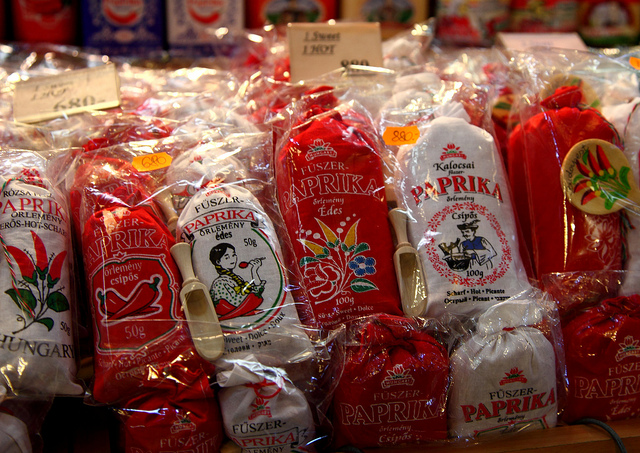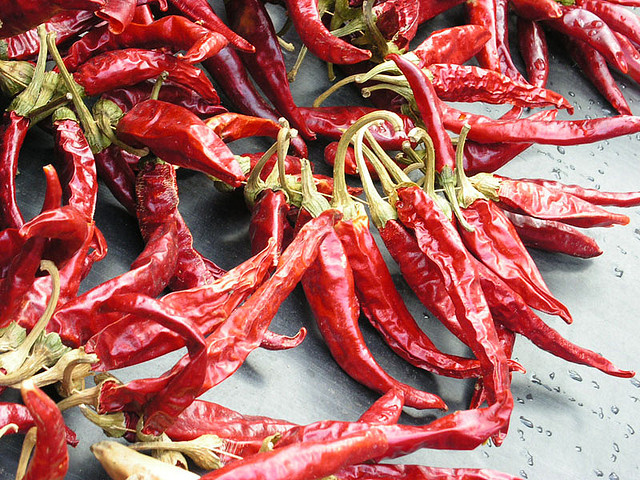A Primer on Hungarian Paprika
TIME : 2016/2/16 14:58:20

Dried paprika for sale in Budapest. Photo © Christine Zenino, licensed Creative Commons Attribution.
If you weren’t aware of paprika’s popularity before landing in Hungary, you most certainly will be when you get here. Strung up and sold everywhere, Hungarian paprika is the national ingredient, spicing up soups, poultry, and countless meat-based dishes. The following are a few facts that will help you understand Hungary’s love of, and association with, the fabled red powder.
Facts About Paprika
- Paprika powder is produced by grinding the dried deep red paprika pods of the pepper plant.
- Although it is the symbol of Hungarian cuisine, the plant was originally introduced by the Turks during their rule in the 16th and 17th centuries.
- Red paprika isn’t the hottest you can find. It’s the orange-colored one that will really make you sweat.
- Paprika’s heat is caused by capsaicin, a chemical that is extracted from paprika plants and used in pharmaceutical production due to its pain-killing properties.
- Paprika is rich in vitamin C (150 mg per 100 g of paprika), a fact that was discovered by Hungarian scientist Albert Szent-Györgyi, who was consequently awarded the Nobel Prize in 1937.
- Kalocsa and Szeged in the south are the heart and soul of Hungary’s paprika production.

Dried paprika peppers or rózsapaprika. Photo © meaduva, licensed Creative Commons Attribution No-Derivatives.
Types of Hungarian Paprika
There are eight different brands of paprika generally available in shops, all of which vary in potency and color.
- Special quality (különleges): the mildest of all paprikas; sports the most vibrant red color
- Delicate (csípősmentes csemege): mild paprika full of rich flavor
- Exquisite delicate (csemege): slightly more potent than the Delicate
- Pungent exquisite delicate (csípős csemege): getting warmer
- Noble sweet (édesnemes): the most common type, slightly potent with a bright-red color
- Half-sweet (félédes): a medium-potent paprika
- Rose (rózsa): light red color and mild
- Hot (erős): the papa bear of paprikas; sporting a light brown-orange color, it’ll make you blow smoke out your ears
Excerpted from the Third Edition of Moon Prague & Budapest.

